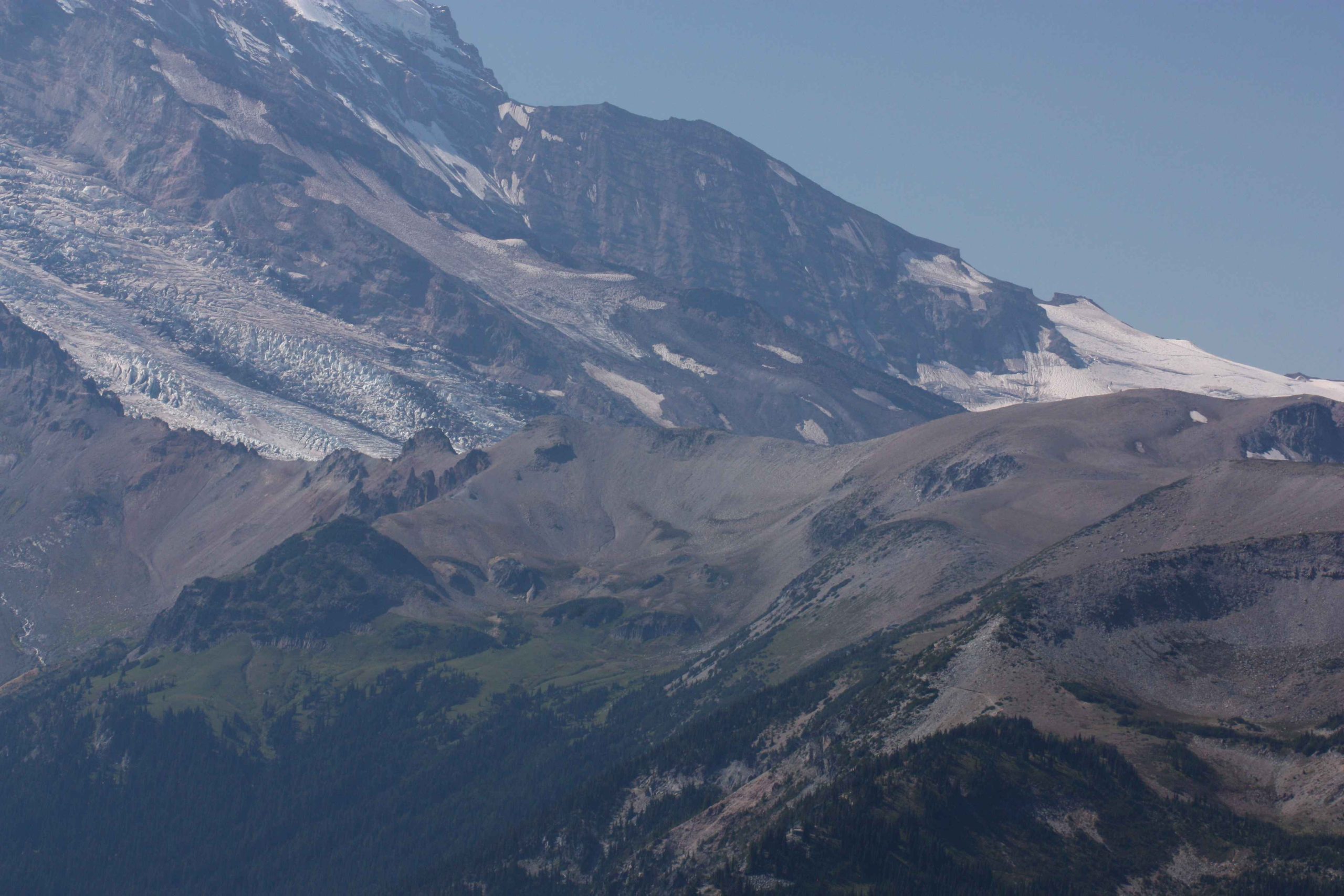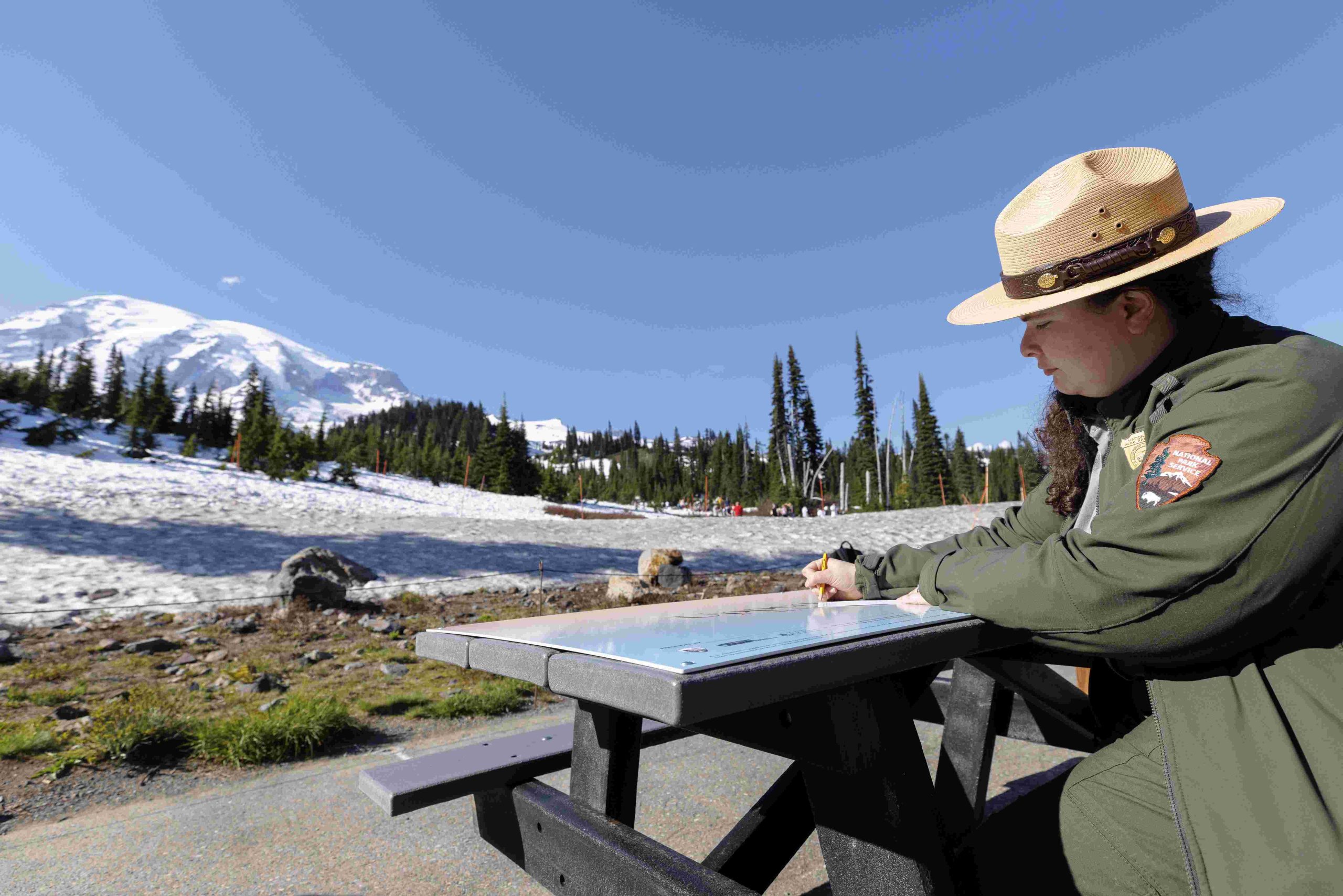Mount Rainier National Park offers a diverse range of hiking trails, from easy walks to challenging backcountry adventures. This comprehensive A to Z Mount Rainier hikes list covers 15 popular trails, detailing their length, elevation gain, difficulty, and seasonal considerations. Whether you’re a casual day-hiker or an experienced trekker, this guide will help you plan your perfect Mount Rainier hiking experience.
What are the most popular hikes in Mount Rainier National Park?

- Alta Vista Trail
- Bench and Snow Lakes
- Burroughs Mountain Trail
- Camp Muir Trail
- Carbon Glacier Trail
- Carbon River Road to Ipsut Falls
- Comet Falls Trail
- Fremont Lookout Trail
- Naches Peak Loop
- Pinnacle Peak Trail
- Skyline Trail
- Sourdough Ridge Trail to Frozen Lake
- Summerland Trail
- Tolmie Peak Fire Lookout Trail
- Wonderland Trail
What are the details of each trail in the A to Z Mount Rainier hikes list?

Alta Vista Trail
- Length: 1.2 miles round trip
- Elevation Gain: 600 feet
- Difficulty: Easy to Moderate
- Trailhead: Paradise area
- Description: A steep but paved trail offering unobstructed views of Mount Rainier’s south face and the Tatoosh range.
- Seasonal Considerations: Mid-July to Mid-September snow-free
Bench and Snow Lakes
- Length: 2.2 to 2.6 miles round trip
- Elevation Gain: 446 to 700 feet
- Difficulty: Easy to Moderate
- Trailhead: Paradise area
- Description: Features two alpine lakes with stunning reflections of Mount Rainier.
- Seasonal Considerations: July to October snow-free
Burroughs Mountain Trail
- Length: 6 to 9 miles round trip
- Elevation Gain: 2,437 feet
- Difficulty: Difficult
- Trailhead: Sunrise parking lot
- Description: Offers spectacular views of Mount Rainier, the Winthrop Glacier, and surrounding peaks.
- Seasonal Considerations: Late July to September snow-free
Camp Muir Trail
- Length: 9 miles round trip
- Elevation Gain: 4,788 feet
- Difficulty: Strenuous
- Trailhead: Paradise area
- Description: A challenging hike to the base camp for climbers of Mount Rainier.
- Seasonal Considerations: Mid-July to Early-September snow-free
Carbon Glacier Trail
- Length: 17.5 miles round trip
- Elevation Gain: 1,300 feet
- Difficulty: Strenuous
- Trailhead: Carbon River area
- Description: A long hike to the Carbon Glacier, offering views of the glacier and surrounding wilderness.
- Seasonal Considerations: Early May to Late November snow-free
What are the best trails for specific activities in Mount Rainier?
Wildflower Viewing
- Naches Peak Loop
- Skyline Trail
- Summerland Trail
Wildlife Spotting
- Pinnacle Peak Trail
- Burroughs Mountain Trail
Waterfall Viewing
- Comet Falls Trail
- Bench and Snow Lakes Trail
What are the costs and permit requirements for hiking in Mount Rainier?
- National Park Pass: Required for many trails within the park
- Wilderness Permits: Necessary for overnight camping on trails like the Wonderland Trail and Summerland Trail
- Other Permits: Specific permits may be required for certain trails, such as the Hancock Lands Permit for some areas
How should hikers prepare for Mount Rainier trails?
- Check trail conditions and weather forecasts before your hike
- Bring appropriate gear, including sturdy hiking boots and layers for changing weather
- Carry plenty of water and snacks
- Inform someone of your hiking plans
- Be aware of wildlife and follow park guidelines for encounters
What are the safety considerations for hiking in Mount Rainier National Park?
- Be prepared for sudden weather changes
- Stay on designated trails to protect the fragile ecosystem
- Carry a map and compass, and know how to use them
- Be aware of potential hazards such as snow fields, river crossings, and steep terrain
- Respect wildlife and maintain a safe distance
By exploring this A to Z Mount Rainier hikes list, you’ll discover the diverse landscapes and breathtaking views that make this national park a hiker’s paradise. From easy walks to challenging backcountry adventures, Mount Rainier offers something for every level of hiker.
References:
1. Wheatless Wanderlust: Hiking In Mount Rainier National Park (For First Timers)
2. Uprooted Traveler: The 13 Best Mt. Rainier Hikes
3. Visit Rainier: Mt. Rainier Hikes & Hiking Trails
